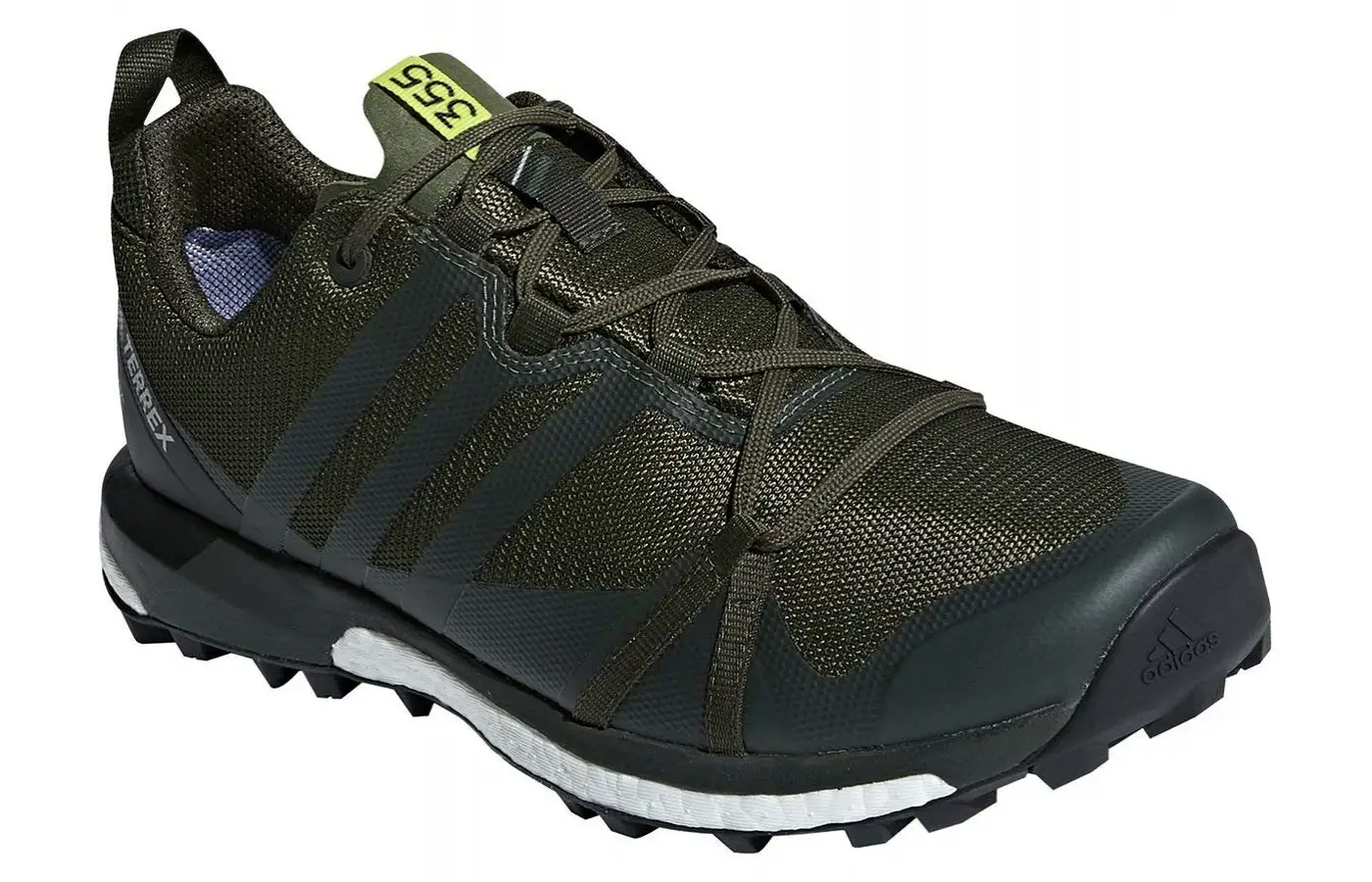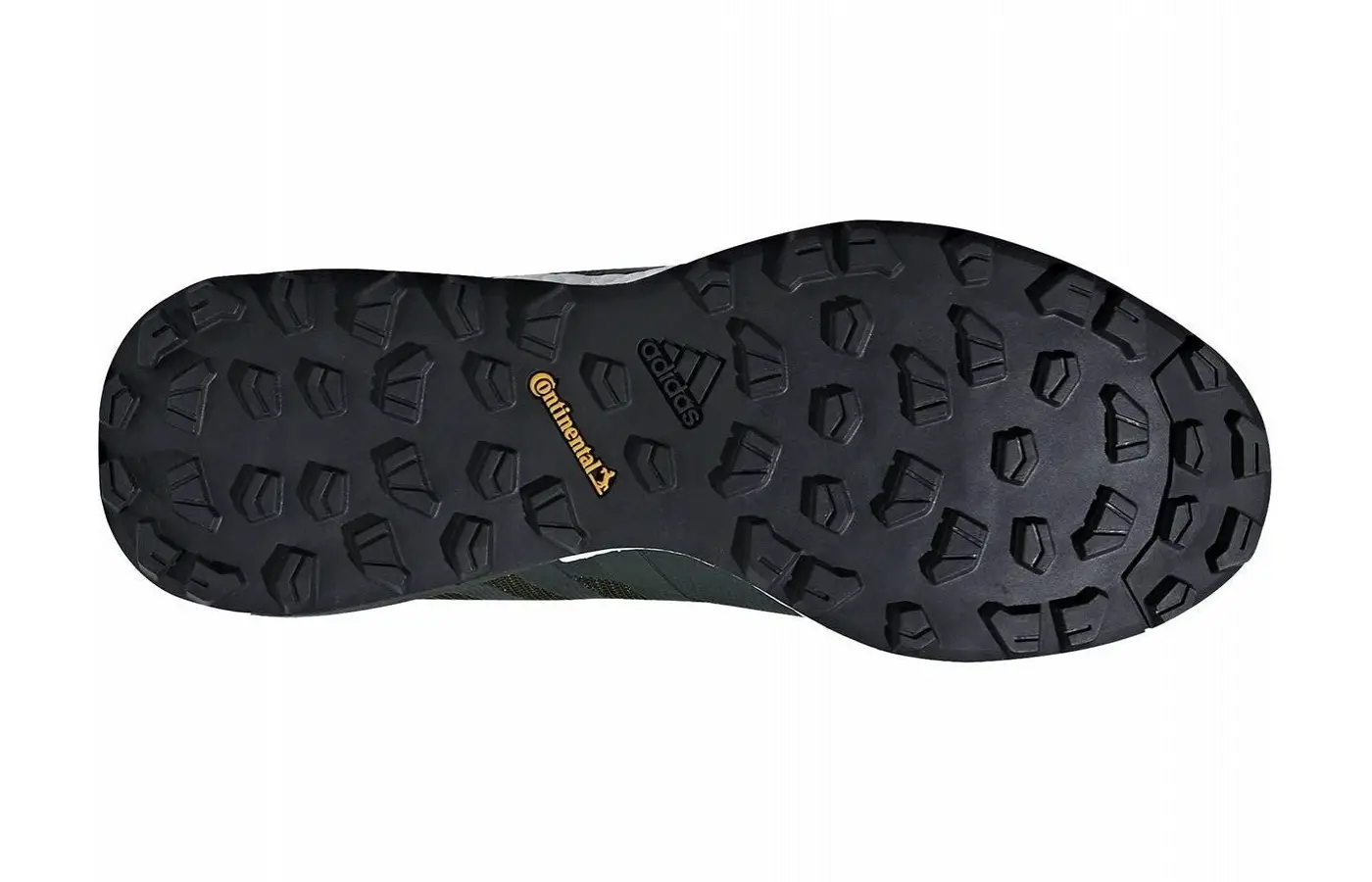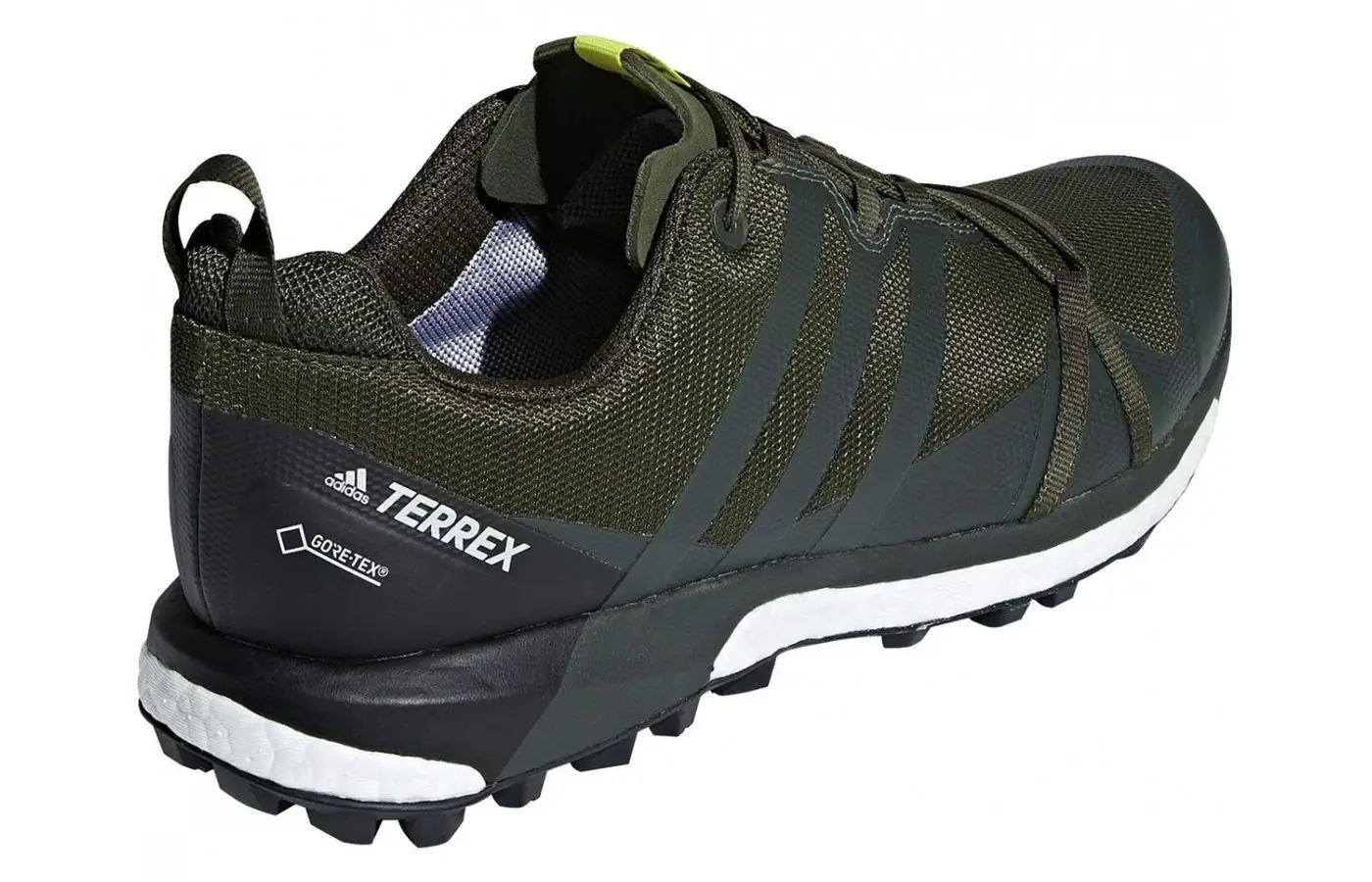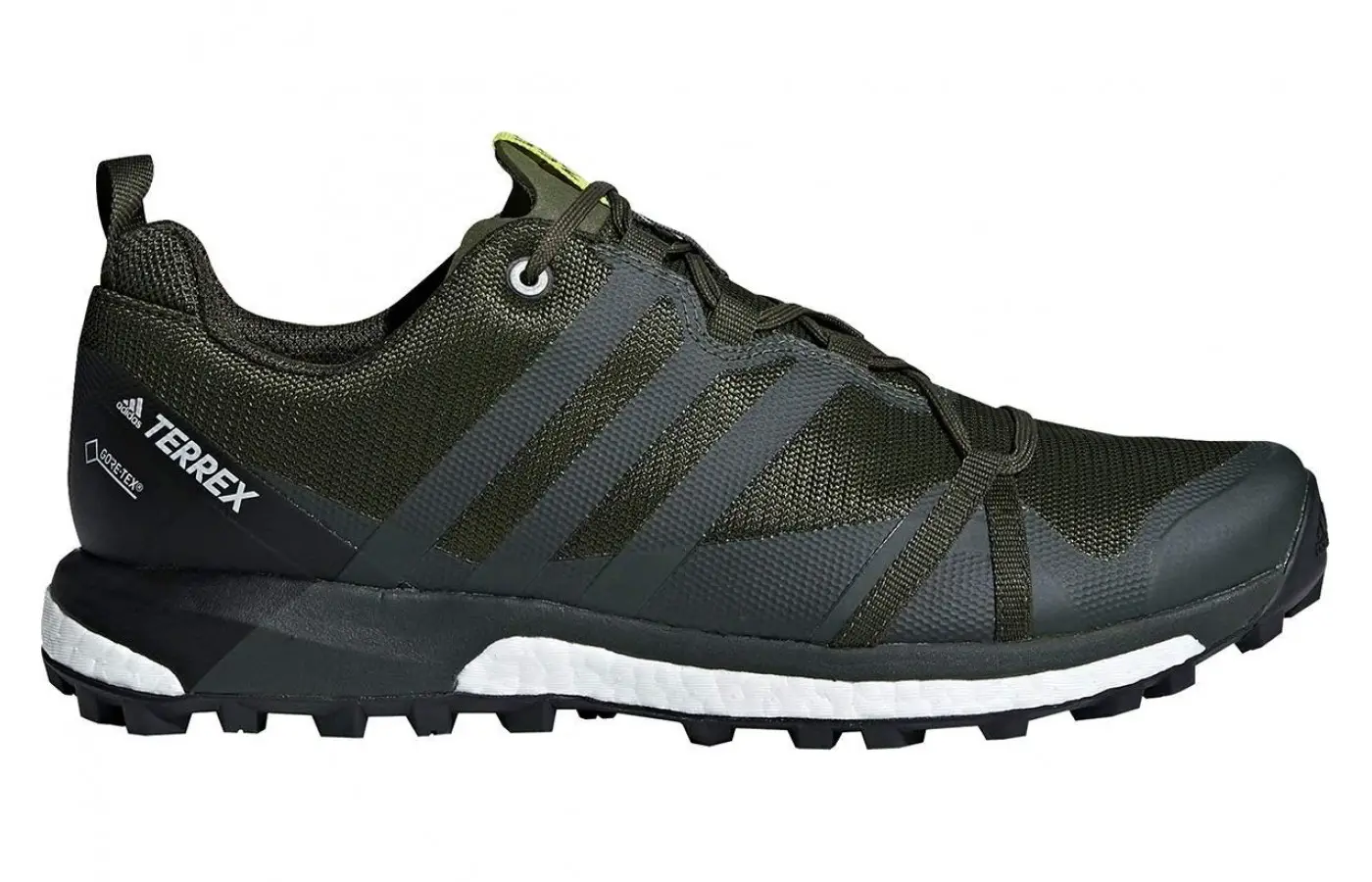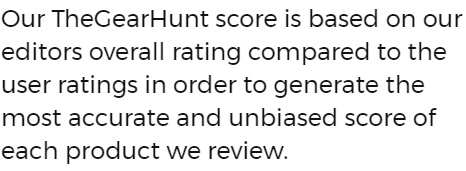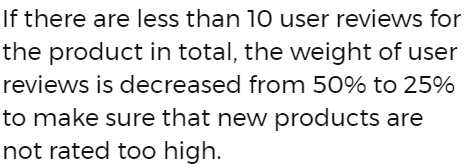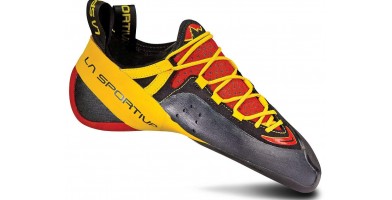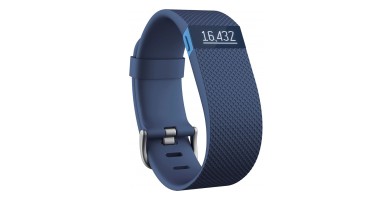Adidas Terrex Agravic GTX
Adidas Terrex Agravic GTX Review Facts
Consumers feel the Adidas Terrex Agravic GTX is suitably lightweight. Purchasers recognize the durability of the shoe. Its waterproof capability makes it a versatile trail running shoe. Runners appreciate the modern design of the shoe. Testers found it to be reliably comfortable. The cushioning system is accommodating and responsive. Those who tested the shoes trust the outsole unit’s capability for traction. Testers who took the running shoes on tough surface adventures report the outsole was unfettered stayed intact.
Editor's Pros & Cons
Pros
- Continental rubber outsole
- Durable materials
- Stable and supportive
- Versatile midsole
Cons
- Lacing system
- Not very breathable
- Rear section caused blisters on testers’ feet
- Shoe runs small in size
Outsole
The outsole is the major highlight of the Terrex Agravic. Reviewers claim it may be the best outsole every tested. The outsole unit features Continental Rubber. It is highly durable. The rubber protects the midsole from abrasive nature trails.
Reliable surface traction necessary for running is delivered. Aggressive grip lugs pockmark the outside of the soil. The surface grip is effectively enhanced. The angular lug placement ensures the multi-surface sole is agreeable and attainable to the runner. The sole wears evenly, but not excessively.
Reliable surface traction necessary for running is delivered. Aggressive grip lugs pockmark the outside of the soil. The surface grip is effectively enhanced. The angular lug placement ensures the multi-surface sole is agreeable and attainable to the runner. The sole wears evenly, but not excessively.
Midsole
Adidas has been using the Boost midsole for six years. Thousands of cushioning pellets are compacted to make the full-length Boost foam unit. It is heavier than standard EVA. The tradeoff in weight is met with extra spring and cushion that Boost delivers.
The feet are well-cushioned as it goes through the gait cycle. Impact shock is attenuated during the landing phase. The harder a runner pushes on the Boost midsole, the more it responds and bounces back. The midsole is stiff, but runners can get momentum. The Boost midsole is a thin layer. The sensation is not plush, but a bouncy ride is delivered.
The feet are well-cushioned as it goes through the gait cycle. Impact shock is attenuated during the landing phase. The harder a runner pushes on the Boost midsole, the more it responds and bounces back. The midsole is stiff, but runners can get momentum. The Boost midsole is a thin layer. The sensation is not plush, but a bouncy ride is delivered.
Upper
Abrasion-resistant overlays and textiles are used in the upper unit. The textiles make the shoes more long-lasting and durable. Small debris and rocks cannot easily tear into the fabric. The structural integrity of shoes is heightened.
The overlay system is fused to the upper fabric. It assists in securely wrapping around the foot. The system reduces the weight of the shoes. Stitched sections reinforce the materials. An EVA tongue is lightweight. It provides extra comfort and support to the top of the runners’ feet. The GTX indicates that GORE-TEX was used in the upper. A GORE-TEX membrane covers the upper unit. It is waterproof material that protects the foot and shoe from getting wet.
The last is a bit narrow through the midfoot. The toe box of the shoe fits well. The ankle cutouts and heel height are ideal for narrow heel when the lacing system is dialed in correctly. It is unique. The lower laces are anchored right, near the metatarsophalangeal joints. It takes a few tries to find a balance of tension that works. Once found, the non-standard lacing system holds well. An extra eyelet near the top of the shoes would allow for a lacing pattern that locks the heel.
The Agravic has a smooth interior. Other than lacing issues, not hotspots are caused. The upper bunches a bit around the bottom lace points. EVA somewhat like that used for the insole is material from which the tongue is made. The tongue provides comfort and cushioning without the thickness of other shoes — the tightly woven fabric of the upper shed light snow and moisture.
The overlay system is fused to the upper fabric. It assists in securely wrapping around the foot. The system reduces the weight of the shoes. Stitched sections reinforce the materials. An EVA tongue is lightweight. It provides extra comfort and support to the top of the runners’ feet. The GTX indicates that GORE-TEX was used in the upper. A GORE-TEX membrane covers the upper unit. It is waterproof material that protects the foot and shoe from getting wet.
The last is a bit narrow through the midfoot. The toe box of the shoe fits well. The ankle cutouts and heel height are ideal for narrow heel when the lacing system is dialed in correctly. It is unique. The lower laces are anchored right, near the metatarsophalangeal joints. It takes a few tries to find a balance of tension that works. Once found, the non-standard lacing system holds well. An extra eyelet near the top of the shoes would allow for a lacing pattern that locks the heel.
The Agravic has a smooth interior. Other than lacing issues, not hotspots are caused. The upper bunches a bit around the bottom lace points. EVA somewhat like that used for the insole is material from which the tongue is made. The tongue provides comfort and cushioning without the thickness of other shoes — the tightly woven fabric of the upper shed light snow and moisture.
Weight
The shoe is a hefty 12 ounces. The weight along with the stiff upper and midsole and narrow footbed do not make a good combination. Performance trail runners will likely pass over the shoes because of the extra weight.
Some question the wisdom of the waterproof feature that adds an extra ounce or two. Some reviewers felt the weight of the shoe was considered a lightweight option. There is no average running shoe weight.
Shoes may vary depending on the construction and size. Lightweight shoes usually range from five to ten ounces. With more support and cushioning, the weight increases. Shoes weighing ten to 13 ounces offer stability. Light shoes increase speed, but finding a balance between cushion, support, and weight is needed to avoid injury.
Some question the wisdom of the waterproof feature that adds an extra ounce or two. Some reviewers felt the weight of the shoe was considered a lightweight option. There is no average running shoe weight.
Shoes may vary depending on the construction and size. Lightweight shoes usually range from five to ten ounces. With more support and cushioning, the weight increases. Shoes weighing ten to 13 ounces offer stability. Light shoes increase speed, but finding a balance between cushion, support, and weight is needed to avoid injury.
Breathability
A GORE-TEX waterproof and breathable membrane is used to prevent water infiltration. The breathability is accomplished by sandwiching layers of abrasion-resistant weld and mesh that also adds durability. The GORE-TEX bootie of the shoe fends off water when runners hit stream crossings or mud. The Terrex Agravic has open mesh in the upper that offers protection while allowing air to flow through when the days are warm.
It has a dual combination of Adidas’ proprietary Boost compound below and EVA on top. The open mesh of the Agravic upper breathes and dries well. The perimeter of the feet are wrapped with a welded overlay that keeps shallow bouts of exposure to moisture out of the shoes. The tongue is not gusseted. It has holes to promote breathability. Due to the holes, a bit of debris and dirt may get into the shoe.
It has a dual combination of Adidas’ proprietary Boost compound below and EVA on top. The open mesh of the Agravic upper breathes and dries well. The perimeter of the feet are wrapped with a welded overlay that keeps shallow bouts of exposure to moisture out of the shoes. The tongue is not gusseted. It has holes to promote breathability. Due to the holes, a bit of debris and dirt may get into the shoe.
Comfort
The upper is a one-piece bootie that is snug when putting it on. Once entirely inside the shoe, it is comfortably wide. There is extra girth through the midsection and a roomy toe box. Adidas uses the top-tier Boost cushioning technology. It is used as the main Terrex Agravic GTX platform to carry the foot efficiently and attenuate impact from shock impact. The runner is kept confident and comfortable when running on unpredictable surfaces.
Not everyone agrees. Due to the narrow footbed, it doesn’t track well for those with regular or wide feet. It has been described as running on rails feeling. The shoes feel stiff to nearly everyone when they first put them on.
There are differences of opinion in how well they soften after being worn a bit. Most testers felt the shoes were adequate for fast and short trail runs, but preferred something with more cushioning for outings that last more than a couple of hours.
Not everyone agrees. Due to the narrow footbed, it doesn’t track well for those with regular or wide feet. It has been described as running on rails feeling. The shoes feel stiff to nearly everyone when they first put them on.
There are differences of opinion in how well they soften after being worn a bit. Most testers felt the shoes were adequate for fast and short trail runs, but preferred something with more cushioning for outings that last more than a couple of hours.
Style
The Agravic is among Adidas’ more aggressive styles. It has has a modestly stiff build and substantial lugs. A standard length for running shoes is part of the Adidas Terrex Agravic GTX construction. Sizing schemes conform to standard runner preferences. The semi-curved shape follows the foot’s natural curve. They are available in sizes for men and women. There are two colorways for the Agravic GTX, a blue, and a white model. The only oddity of the shoe is the lacing system. The consensus is the shoes are stylish and aesthetic.
Durability
The upper overlays and textiles are meant to last. The aspects of the Terrex Agravic that make it such a durable trail shoe include solid heel and toe protection, welded overlays, and hard face textile fabric used in the upper. The rubber compound used in the shoe is excellent for longevity and durability.
Protection
The abrasion-resistant overlays and textiles protect the feet from small objects and trail hazards. Agravic has a surprisingly robust toe guard that protects toe jams. Underfoot protection of the Adidas Terrex Agravic GTX is excellent. The combination of a full-length outsole and EVA layer keeps the jolt due to sharp rocks from reaching the feet.
Responsiveness
The Agravic GTX performs well. It is quite responsive. The underfoot feel comes to life as soon as a runner hits the trail. There are firmer Adidas Boost midsoles. The denser EVA layer dampens some of the rebound.
When hiking technical ascents, the responsive, but firm midsole keeps steps feeling precise and stable. The Boost midsole gets nearly universal praise for the blend of responsiveness and cushioning properties.
When hiking technical ascents, the responsive, but firm midsole keeps steps feeling precise and stable. The Boost midsole gets nearly universal praise for the blend of responsiveness and cushioning properties.
Terrain
The Terrex Agravic GTX was created for various outdoor terrain, especially those that are technical. High-quality components work together to offer consistent off-road path performance. The outsole has a durable rubber compound that provides traction. Gripping lugs offer more grip on uneven ground. The shoes are built to conquer elements on any terrain. The stiff Agravic heel counter is nearly ideal for technical terrain.
The shoes can easily take on five to 15-mile off-trail jaunts, steep hikes, and ridge routes. The durable construction makes the shoes great for lightweight backpacking and hiking. The deep grippy lugs deliver sure footing when running downhill, uphill, or along trails that are muddy and wet.
The shoes can easily take on five to 15-mile off-trail jaunts, steep hikes, and ridge routes. The durable construction makes the shoes great for lightweight backpacking and hiking. The deep grippy lugs deliver sure footing when running downhill, uphill, or along trails that are muddy and wet.
Price
The MSRP is $160.00. It can be purchased from Amazon for prices ranging from $80 to $165.
Flexibility
The upper feels stiff. There is no flex. The thin Boost layer gives the runner a lively step. It is combined with an EVA frame that wraps around the midsole top, which makes the shoes more stable. Without the EVA frame, Boost would feel unstable and squishy on uneven ground. In spite of the thick rubber sole and Boost foam, the shoes feel relatively flexible on the feet. Though the shoe is on the stiff side, it feels protective and snappy. In the forefoot is a flexible and slim rock plate. Combined with the outsole, it offers bombproof protection while maintaining torsional flexibility and good trail feel.
Traction
The shoes have exceptional traction. Few shoes are as capable of such a variety of surfaces. The yellow Continental logo located on the outsole is an indication of exceptional traction. The Continental Rubber provides grip in inclement weather and makes the shoes durable. The lugs are big enough to grip quite well.
Continental Rubber came about when Adidas partnered with Continental, a German corporation, to employ the rubber technology used in car tires. The rubber compound is the same as that used in snow tires.
The tread mimics a mountain bike tire pattern. It is an exceptionally sticky compound that paired with the open lug design is excellent for mountain running. The tread pattern of the outsole is responsible for how will the shoes work. The lugs are approximately six-mm deep.
The depth makes the shoes versatile in providing grip on dry and wet trails. The pattern of the lugs adds surface. The lugs point in opposite directions to provide a firm hold in any direction. The lugs on the back of the shoe are reversed for braking power on downhill runs.
They take up about ⅔ of the sole. The lugs at the forefoot are sharp and adequate to grab when climbing on loose terrain tightly. The company claims the shoes provide 30 percent more traction when conditions are dry and 32 percent more in wet conditions when compared to the competition. The pattern of the lugs' area works with the rubber compound as it provides excellent traction on slick and smooth surfaces. The space between the lugs helps shed mud on rainy days.
Continental Rubber came about when Adidas partnered with Continental, a German corporation, to employ the rubber technology used in car tires. The rubber compound is the same as that used in snow tires.
The tread mimics a mountain bike tire pattern. It is an exceptionally sticky compound that paired with the open lug design is excellent for mountain running. The tread pattern of the outsole is responsible for how will the shoes work. The lugs are approximately six-mm deep.
The depth makes the shoes versatile in providing grip on dry and wet trails. The pattern of the lugs adds surface. The lugs point in opposite directions to provide a firm hold in any direction. The lugs on the back of the shoe are reversed for braking power on downhill runs.
They take up about ⅔ of the sole. The lugs at the forefoot are sharp and adequate to grab when climbing on loose terrain tightly. The company claims the shoes provide 30 percent more traction when conditions are dry and 32 percent more in wet conditions when compared to the competition. The pattern of the lugs' area works with the rubber compound as it provides excellent traction on slick and smooth surfaces. The space between the lugs helps shed mud on rainy days.
Stability
The Adidas Terrex Agravic trail shoe is rugged and stable. It is meant to tackle gnarly adventures. The stability of the shoe is appreciated when hiking with a 40-pound backpack. Sloppiness is countered by a rigid, thick saddle that locks the foot firmly in place. It wraps from the heels to the laces.
Drop
The Agravic has a drop of 6mm. The Luxembourg Institute of Health researched running shoes with a drop of zero, six, and ten millimeters. During the six-month trial, 25 percent of the participants reported being injured.
The injury rate was similar for all drop heights. It is recommended that runners choose a heel to toe drop height that feels as though it is an extension of the foot when running. Some runners prefer high heel to toe drops while others prefer flatter models. There are some recommendations for specific foot issues. Low-drop is recommended for those with arthritis or neuroma of the foot.
The injury rate was similar for all drop heights. It is recommended that runners choose a heel to toe drop height that feels as though it is an extension of the foot when running. Some runners prefer high heel to toe drops while others prefer flatter models. There are some recommendations for specific foot issues. Low-drop is recommended for those with arthritis or neuroma of the foot.
Key Features
* Abrasion-resistant upper
* Boost midsole adapts to various surfaces
* Continental Rubber outsole for extraordinary grip
* GORE-TEX lining
* Lugs in the outsole
* Boost midsole adapts to various surfaces
* Continental Rubber outsole for extraordinary grip
* GORE-TEX lining
* Lugs in the outsole
Bottom Line
There are high and low points of this shoe. Those who appreciate features and technology found favor with the Adidas Terrex Agravic GTX. It has an effective waterproof capability. The trail-optimized tread is what is expected of running shoes. Neutral runners welcome the bouncy midsole and responsiveness.
Some testers found some of the components uncomfortable when running. The stiffness can make the shoe uncomfortable. They are responsive, aggressive speed shoes, but the nearly 12-ounce weight does not make as much sense as a non-GTX model.
The amazing outsole made of Continental rubber is a capable technical trail performer. The Boost midsole combines firm responsiveness and cushion. It is ideal for backpacking and hiking, but a tad harsh on trails that are smooth. The upper is problematic to some reviewers.
Some testers found some of the components uncomfortable when running. The stiffness can make the shoe uncomfortable. They are responsive, aggressive speed shoes, but the nearly 12-ounce weight does not make as much sense as a non-GTX model.
The amazing outsole made of Continental rubber is a capable technical trail performer. The Boost midsole combines firm responsiveness and cushion. It is ideal for backpacking and hiking, but a tad harsh on trails that are smooth. The upper is problematic to some reviewers.





